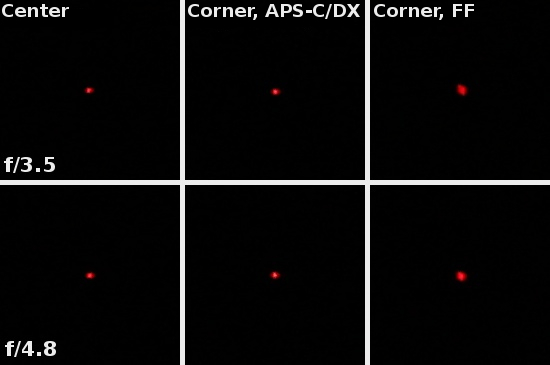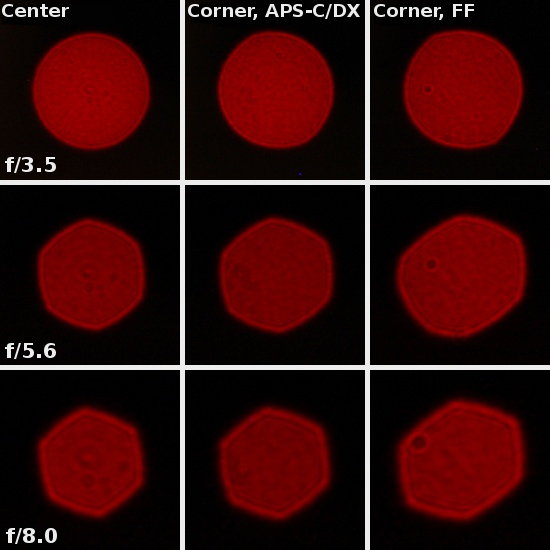Samyang T-S 24 mm f/3.5 ED AS UMC
7. Coma, astigmatism and bokeh

In the normal working mode the astigmatism is nothing you can complain about. The average difference between horizontal and vertical MTF50 function values amounted to less than 8% which is a result considered a borderline between low and medium levels.
Please Support UsIf you enjoy our reviews and articles, and you want us to continue our work please, support our website by donating through PayPal. The funds are going to be used for paying our editorial team, renting servers, and equipping our testing studio; only that way we will be able to continue providing you interesting content for free. |
- - - - - - - - - - - - - - - - - - - - - - - - - - - - - - - - - - - - - - - - - - - - - - - -
Of course that situation changes when you start those tilts and shifts. Astigmatism is very sensitive to all kinds of optical axis inclinations towards the detector. In the case of the maximum shift to the left the centre of the frame suffers from a huge level of astigmatism. At the maximum relative aperture that aberration reaches 45%, by f/5.6 it decreases to 35% and it becomes moderate only by f/11 where it reaches 8%.
The situation gets more complicated when you apply a combination of tilt and shift. The fuzzy areas become very large as they are a result of cooperation of all axis and off-axis aberrations. With such testing methods as are at our disposal it would be impossible to say anything about the degree of their influence. Apart from that it would be a purely theoretical task because here it only matters that these fuzzy areas exist – what they consist of is a secondary issue.
Defocused images of light points at the maximum relative aperture are very pleasant to the eye. The light spread is even, without any significant extremes. You can also notice a large field of the lens. The truncation of the circles, connected to vignetting, is negligible; by the way you can actually notice here that the aperture really consists of six blades.







